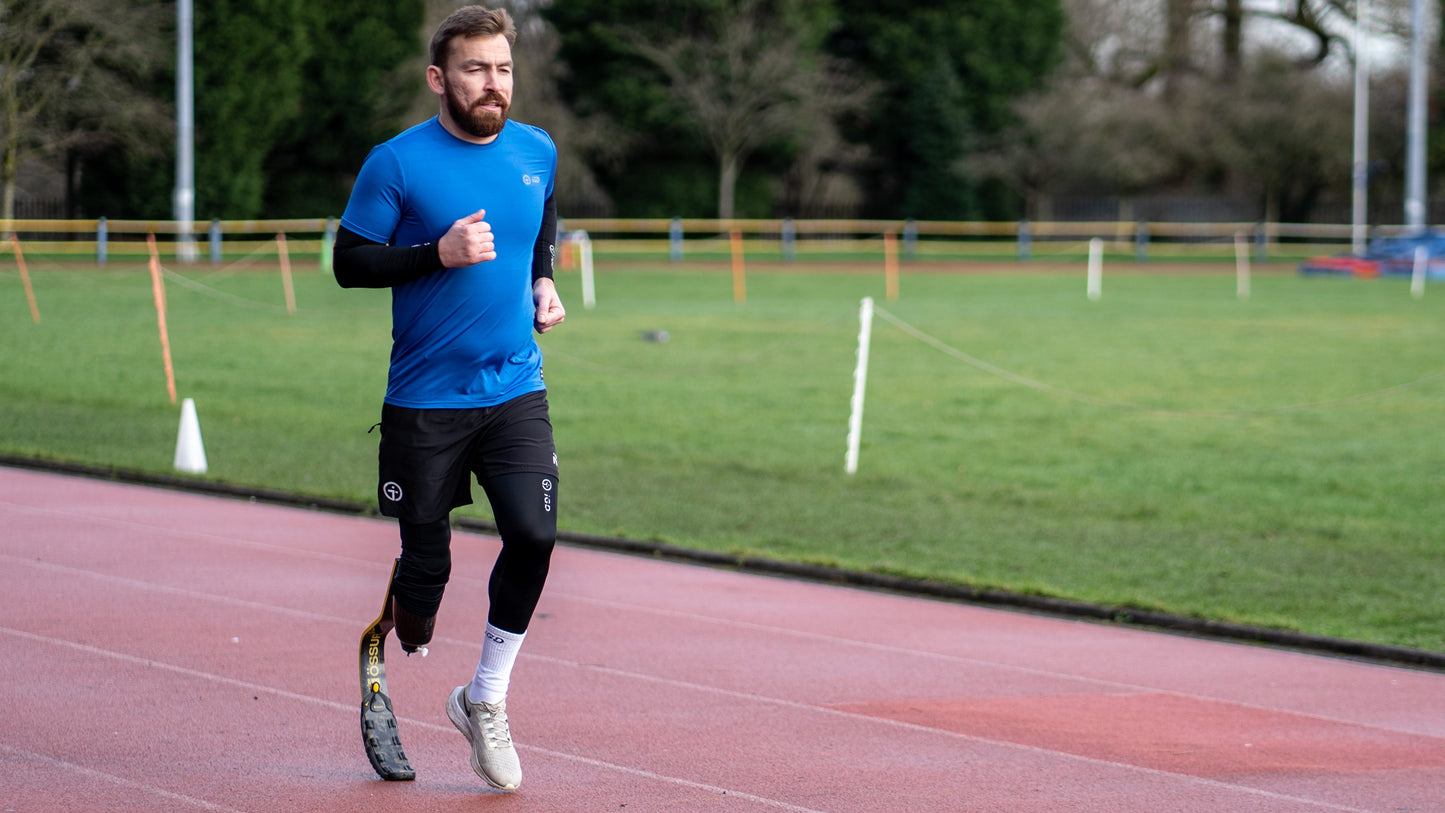JOIN TEAM IGD
Join our community for early access to events, workout guides, and exclusive offers - including 15% off your first order.
This store requires javascript to be enabled for some features to work correctly.

Running is one of the most accessible forms of exercise, offering lots of amazing benefits for the body and the mind. Whether you're putting running shoes on for the first time or returning after a break, here are our top tips for supporting your muscles, building distance and recovering quickly.
If you've never run before or it's been years since your last jog, the idea of running even a short distance can feel daunting! This is where programs like Couch to 5K (C25K) come in handy. C25K is a structured plan that gradually increases your running time over several weeks, making it ideal for beginners. The beauty of this programme lies in its simplicity and accessibility because you start with a mix of walking and running, allowing your body to adapt slowly without overwhelming yourself.
For those looking to get back into running after a break, the principles of C25K can still workworkl. The key is to start slowly and listen to your body. It’s tempting to jump right back to your previous level, but doing so can increase the risk of injury. Instead, ease back into the routine, allowing your muscles and joints to adjust.
Once you're comfortable running shorter distances, it’s time to think about gradually increasing your distance. One of the most effective strategies is the 10% Rule where you only increase your total weekly mileage by 10% each week. For example, if you ran 5 miles this week, aim for 5.5 miles next week.
Another helpful technique is to incorporate long runs into your routine. These are slower-paced runs that are longer than your usual run, designed to build endurance. Long runs should be done at a conversational pace, where you can talk without gasping for air. The purpose here is to build stamina and train your body to be on its feet for longer periods.
One of the most common mistakes beginners make is fixating on their speed or the time it takes to complete a run. While it’s natural to want to improve, focusing too much on these stats early on can lead to frustration and burnout. Speed and time will naturally improve as you become more consistent with your running.
Instead, concentrate on building a good routine. Consistency is way more important than speed when you’re starting out. Pay attention to how your body feels during and after a run. Are you enjoying the experience? Are you finishing your runs feeling energised rather than exhausted? These are better indicators of progress for beginners than your pace or finishing time.
The frequency of your runs depends on your fitness level and goals. For beginners, three to four times a week is a good starting point. This frequency allows you to build a habit without overloading your body, giving your muscles time to recover between sessions.
On your non-running days, you might consider incorporating other forms of exercise to support your running. Cross-training with activities like cycling, swimming, or yoga can improve your overall fitness and reduce the risk of injury. Additionally, engaging in strength training exercises two to three times a week can help build the muscles that support your joints during running, further preventing injuries.
Strength training is a powerful ally for runners. Exercises like squats, lunges, and deadlifts strengthen the muscles in your legs, hips, and core, which are essential for maintaining good running form. A strong core helps you stay stable and reduces the risk of lower back pain during longer runs.
High-Intensity Interval Training (HIIT) can also be beneficial. HIIT involves short bursts of intense exercise followed by rest or low-intensity periods. This type of training can improve your cardiovascular fitness, making your regular runs feel easier.
Yoga and stretching exercises are excellent for improving flexibility and preventing injuries. Tight muscles can lead to strains during running, so dedicating some time to stretching after each run can keep you limber and reduce soreness.
When you’re new to running or returning after a long break, your muscles will likely feel sore as they adapt to the new demands. Compression clothing like ours can be an effective tool in aiding recovery. Compression garments apply gentle pressure to the muscles, which can help reduce muscle oscillation during activity. This, in turn, may reduce muscle soreness and fatigue after your run.
Additionally, wearing compression clothing post-run can improve circulation, helping to flush out metabolic waste and deliver oxygen to tired muscles. This can speed up recovery, allowing you to stick to your running routine with less discomfort.You can check out some of our top compression picks for running below.
Getting into running requires patience, consistency, and a bit of self-compassion. Start slow, focus on building a sustainable routine, and don't get caught up in speed or time metrics. Support your running with strength exercises, cross-training, and proper recovery techniques like compression clothing to ensure a well-rounded approach.
Remember, the goal is to make running a long-term part of your lifestyle, not just a short-term challenge. Celebrate your progress, listen to your body, and enjoy the many benefits that running can bring to your life.
Difficulty Level: (5) ⭐⭐⭐⭐⭐
Convenience (How easy is it to fit into a lifestyle): (9) ⭐⭐⭐⭐⭐⭐⭐⭐⭐
Accessibility for Beginners (Form and Technique): ⭐⭐⭐⭐⭐⭐⭐
At iGD, we specialise in compression wear for running short or long distances. Our compression technology offers gluteal and leg support to help you train harder and recover faster. Our products are also breathable and comfortable, to keep you cool whilst you workout.
Here’s what we recommend…
Our top compression picks for running:
In cold weather, you can also add…